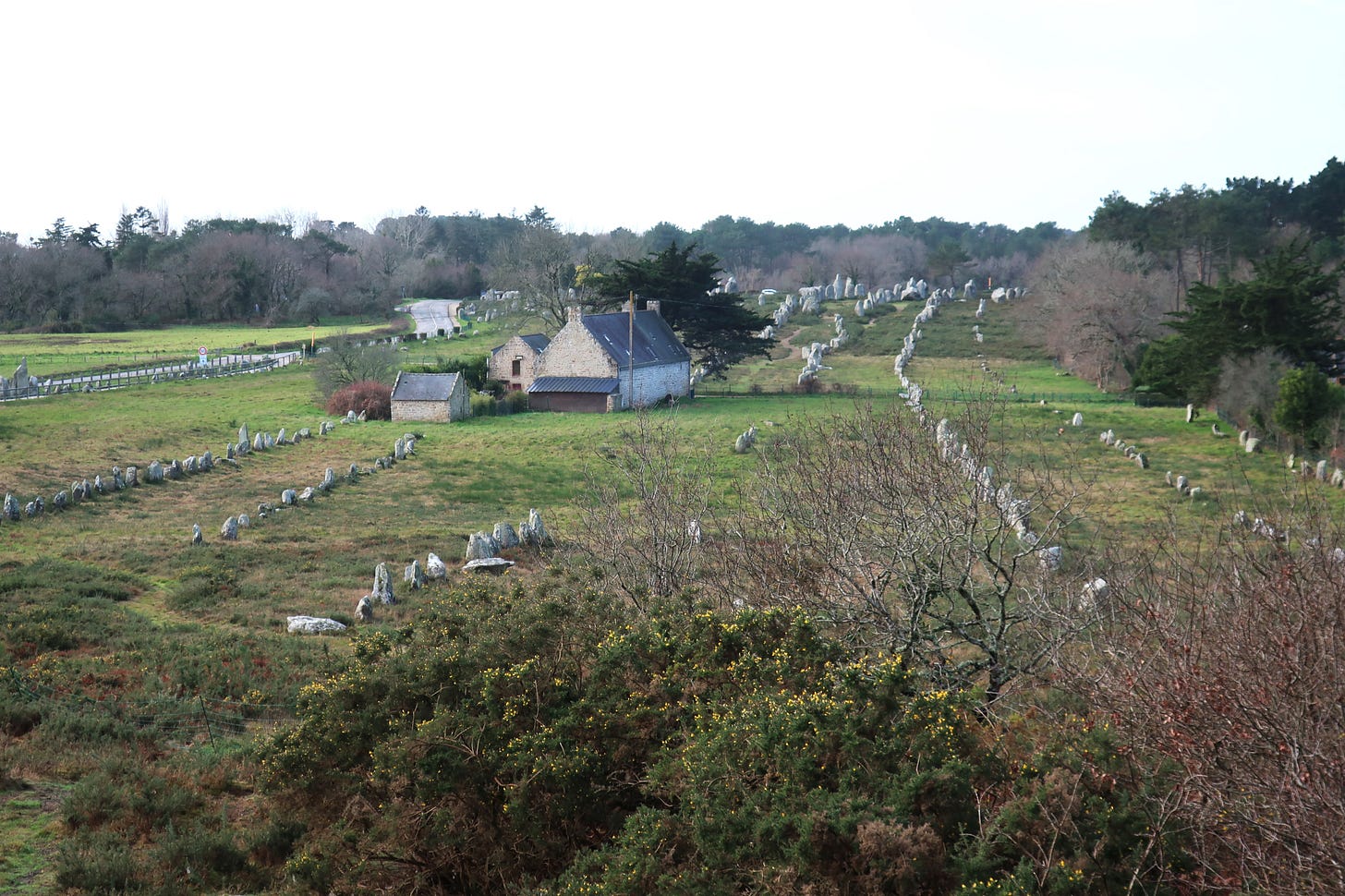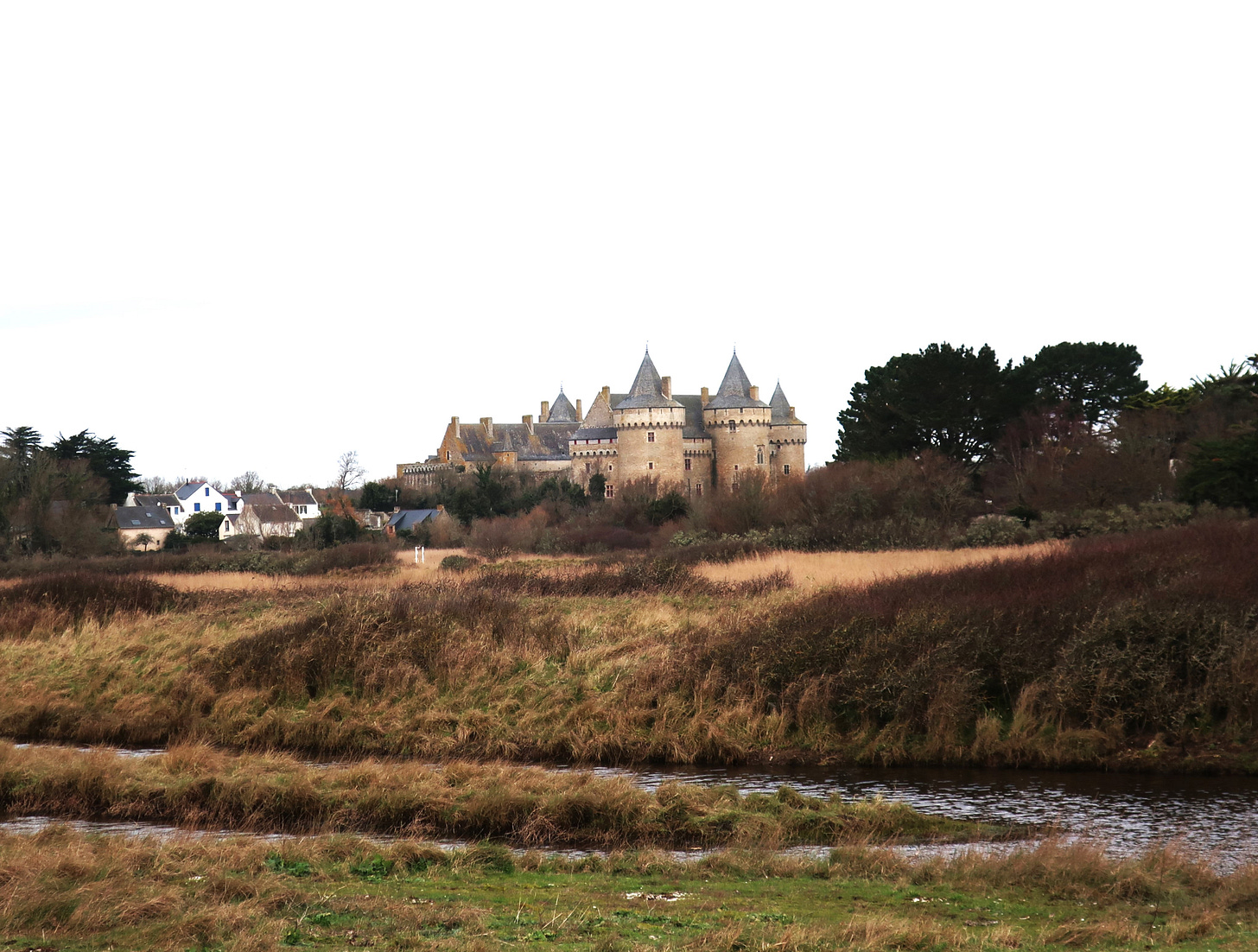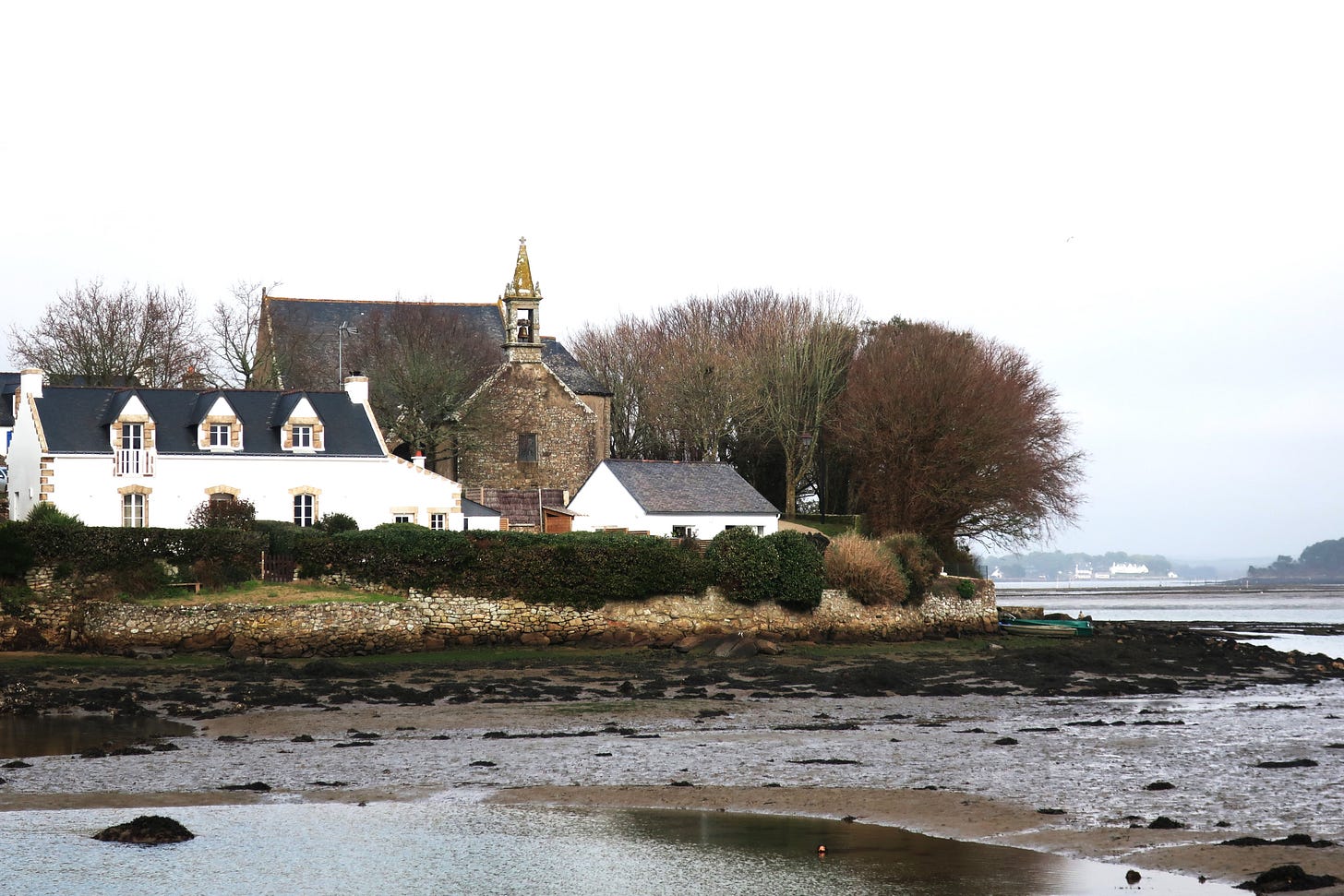The Gulf of Morbihan, Brittany
‘Mor bihan’ is Breton for ‘little sea’ and the Gulf is large – 5 km wide, 25 km long, and scattered with over 40 small islands. I overlapped for several days with the homeowner at my housesit in Vannes, and she was kind enough to drive me to some of the outlying areas around the Gulf that would have been almost impossible to visit without a car.
Carnac
Carnac is famous as the site of over 10,000 Neolithic standing stones (menhirs) stretching in straight lines for over a kilometre. It’s hard to imagine farmers in 3,300 BC carting and erecting the stones with nothing more than some very basic tools. There are many stories around the stones, but the most likely explanation is that the stones were erected to honour families’ ancestors. But they may also have been established as protective shields against an attacking army. The sheer extent of the site is mind-boggling.
I crouched down very low and walked into the heart of a tumulus, a central burial chamber surrounded by walls and ceilings made of enormous boulders and then covered in turf. I believe it was the tumulus of Tumiac, which was erected between 4790 and 4530 BC.
Château de Suscinio
The following day, I went for a walk along the Atlantic while my host had a swim. A pond and marshy area separated the beach from the Château de Suscinio, one of the largest castles in Brittany, that we visited after lunch at a crêperie. It was in ruins but has been restored to its former glory with animations that bring the former inhabitants back to life.
Sainte Anne d’Auray
Sainte Anne d’Auray is the third most popular pilgrimage site in France, and it’s huge, encompassing basilica, cloister, convent, separate meeting rooms, and various full-size monuments. I was most impressed by an enormous ‘bridge’ with curving flights of stairs on either side. It reminded me of the Bridge of Sighs in Venice but much larger and grander (and lacking a river). It must be used for triumphal processions.
Port de St. Goustan
The Port of St. Goustan is a former fishing port, now transformed into a tourist attraction thanks to its hilly, cobblestoned streets lined with medieval houses and its central square surrounded by restaurants and cafés. I’m always pleased that I’m able to visit these places out of season when there is still room to breathe and view the surroundings.
Île de St. Cado
A bridge separates the Islet of St. Cado from the mainland. But before walking across it, it’s imperative to admire the fisherman’s cottage sitting all on its own miniature island in the bay. It was once home to an oyster park keeper and his family. Despite its apparent isolation, the family’s every move would have been watched over by residents on the mainland and in St. Cado.
The small Romanesque chapel on the islet is dedicated to St. Cado. People who are deaf or hard of hearing can lie down on his bed of stones and their hearing will be restored.
The Islet of St. Cado is located in the Ria of Étel that extends inland for 15 kilometres. My host compared it to the fjords in Norway.












